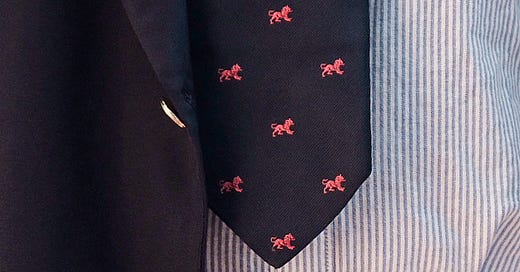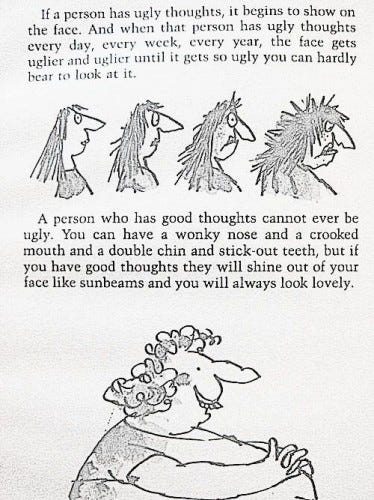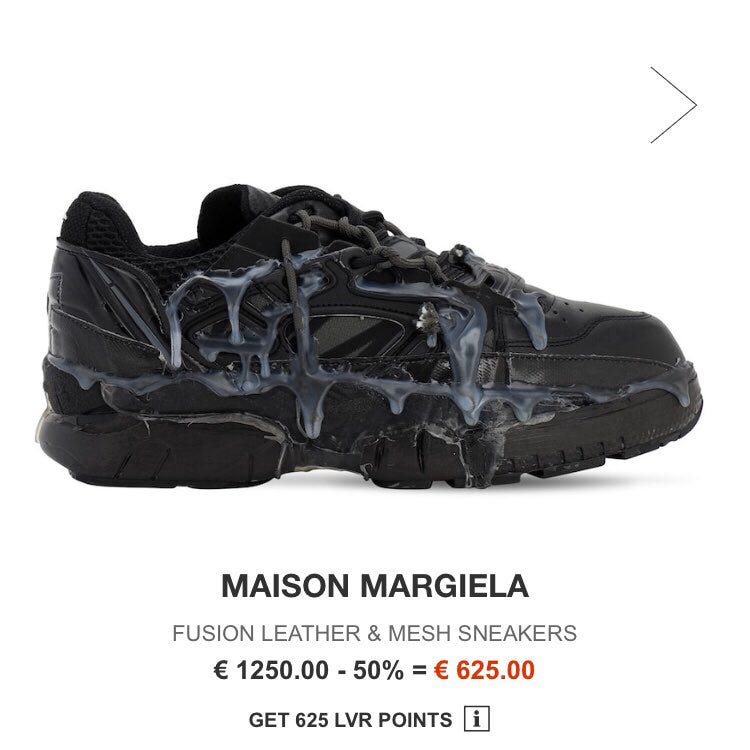Have you ever heard the phrase “don’t judge a book by its cover?“
Of course you have — it’s one of the most common idioms in the English language. It’s also a really stupid phrase, in my opinion.
People are a summation of the life they have lived — how we present ourselves to the outside world, and indeed even how our face rests is a culmination of the things that we have experienced.
In other words, judging a book by its cover is an incredibly useful heuristic for us. So useful in fact, that it’s it’s almost entirely covert — we rarely consciously realize that we’re doing it. In fact, a 2006 article estimated that a first impression is formed within the first 0.1 seconds of seeing a person. You get one tenth of a second before you’re fully judged by a person in a social situation — pretty incredible honestly.
So what have humans done in response? Psychologist Carl Jung suggested that we build a persona — a “mask” that we wear for the outside world to see. The persona is one of Jung’s famous archetypes, and one of the four major archetypes that relate specifically to personality (along with the shadow, anima/animus, and the self).
Our persona is more or less a signal to others regarding who we are, or more accurately, how we would like to be seen. You might carry a different persona in different social situations (i.e., with friends vs. with family vs. at work) as well.
So connecting this with what we no know about the rate at which someone is judged, it makes sense that our personas are intimately tied with signaling. The ultimate purpose of signaling, a form of nonverbal communication, is to convey social status — think of it in terms of attracting a mate or placing oneself in a dominance hierarchy.
An $8,000 Brioni suit conveys a very specific signal to everyone else (this person is capable of “wasting“ resources and is operating from a place of extreme abundance). The same happens on the other end of the spectrum — if you go out in public in a ratty t-shirt and sweatpants, you’re conveying a position at the bottom of the social hierarchy.
This is a pretty simplistic look at signaling, and of course it’s not as simple as “rich man in suit = powerful“, but I think this is a decent summary of the principle for our purposes. Of course there are other considerations like people faking signals to blend in with a group that they would otherwise have no shot at belonging to, but that’s outside of the scope of this piece.
The takeaway here is that looking “put together“ (with respect to the specific context in which you’re operating) is a prosocial move and will generally benefit you in terms of others’ perceptions of you.
I don’t care what others think I’m a sigma male
Yes you do, shut up. Plus, stating that you have low agreeableness or behave antisocially is, in itself, a status signal (just not a very good one).
So now that we’ve established a psychological foundation that supports the notion that how you look is important, whether you want it to be or not (there are of course other reasons to want to look good, but I see most of them as being tangential, or otherwise stemming from what we’ve laid out above), we can begin to talk about methods of cultivating a personal style, that will at the very least keep your head above water.
I will say before we get into it that style and fashion are two entirely different things. You don’t need to drop an entire paycheck on the Maison Margiela cumshoes, for example. Style is the expression of the self, and there are limitless possibilities for you to explore, though it can help to have a basic framework for looking good if you have no idea where to start.
The first (and arguably most important) point to address here is context. Settings and occasions play a huge role in terms of the appropriateness of an outfit.
If you follow my page, I think it’s rather safe to assume that you understand the value that clothing has as a tool of communication.
If you aren’t able, or are otherwise unwilling, to match the context of the setting you’re in, you’re implicitly communicating that you don’t belong or shouldn’t be taken seriously in that context.
Imagine wearing a Hawaiian shirt and sandals to a job interview for a mortgage broker position — it would go horribly! There are much more covert examples of this taking place essentially every time you step outside of your house.
There are opportunities for context to be used to make a statement, however. Consider the early Silicon Valley ‘techie’ look: Dressing like shit was a deliberate move to indicate that these important founders did not need to operate within the traditional framework of business, since their ideas and platforms carry so much inherent value. Of course, this has become its own context and most of SV dresses like this now.

Next up is fit. Clothes are generally designed with a certain body type in mind — usually a lean frame, sometimes with a bit of muscle. If this is you, then you’ll probably have a pretty easy time finding stuff that fits you in a flattering manner.
If it’s not you, then you’ll have some work cut out for you.
This means either losing weight until you’re lean enough for everything to look flattering, or going out and buying from a bunch of different brands until you find what works for you. There are also some emergent clothing companies that offer made-to-measure options for reasonable prices. Luxire and Proper Cloth (whom I work with) come to mind.
If you’re a bigger guy, you might be happy to hear that looser, more relaxed fits have been making their way back into the mainstream after being taboo for the better part of a decade. Thank God by the way — years of sports has made it a virtual impossibility for me to fit my gigantic quads into slim pants (and when I can, they often end up looking ridiculous).
So now that we’ve covered context & fit, let’s address what you should actually be looking for. I think the easiest thing to do here is to first construct a capsule wardrobe — this provides a low-effort framework for you, so that you don’t really have to put much thought into what you’re wearing on a given day. This is expressly an extremely basic wardrobe made up of just a few pieces of clothing.
Generally the best idea here would be to find your ideal fit and buy a couple iterations of it for each clothing style. For example, once you find a plain t-shirt that you like, buy one in grey, blue, black etc.
The keyword here is simple — you want these to be your workhorse pieces that you’ll be able to mix and match to create cohesive outfits without much thought.
This wardrobe shown below is literally the first result for “men’s capsule wardrobe“ in Google. There’s tons of options and ideas for a capsule wardrobe out there — this one is geared towards American prep, but the underlying idea is expressed here well (though I would hardly call a Shep shirt an essential lol). You just need a few simple things from each category and you’re on your way.
For sourcing cheap basics, I highly recommend that you go on Amazon and buy a fabric tape measure. It’ll allow you to get a good idea of your particular dimensions. It’s also really handy for buying second-hand from websites such as Grailed, Poshmark, or eBay. All three of these sites are great options for building up a nice wardrobe for very little money.
You can also regularly find brand-new garments for significant discounts — using these sites doesn’t necessitate the garments being second-hand. A lot of people buy final-sale items and realize they don’t like them or they don’t fit, and will end up selling their unworn stuff at a huge discount.
Aside from the second-hand option, you can usually find really cheap (and relatively low quality) garments from Uniqlo or J. Crew/J. Crew Factory. They’re a good place to start, but I would recommend upgrading to nicer brands over time.
Once you feel like you have a pretty well-rounded collection of basics, you can gradually begin experimenting with stuff you like to make your style a little more personal. This can include anything from fit to color to texture. Basically just try out a bunch of stuff and stick with what calls to you.
Don’t be afraid to get into trends either — some trendy brands are doing some really cool stuff (see Drake’s, Noah, and Aime Leon Dore), and it doesn’t hurt at all to incorporate some of their ideas into your own style.
A really great way for figuring out what you like is to use inspiration albums. These are basically collections of photos that represent a certain style — usually a mix of the clothes themselves and the vibe that’s supposed to be conveyed by dressing in such a manner.
I’ll leave you guys with an excerpt from an article that I came across while writing this, as well as a few inspiration albums. I’m choosing trad/ivy/prep albums, as well as some Americana/workwear stuff. Both styles are relatively timeless and require little in the way of maintenance to the pieces that comprise the styles. Hope you guys enjoyed!
Trad/Ivy/Prep:
https://imgur.com/a/d31LYK6
https://imgur.com/a/eEw6B
https://imgur.com/a/SRKjs
https://imgur.com/a/xzALj
https://imgur.com/a/rFGmx
Americana/Workwear:
https://imgur.com/gallery/lb9G2nf
https://imgur.com/a/YuP4hw8
https://imgur.com/a/3B0cC










Great post as always